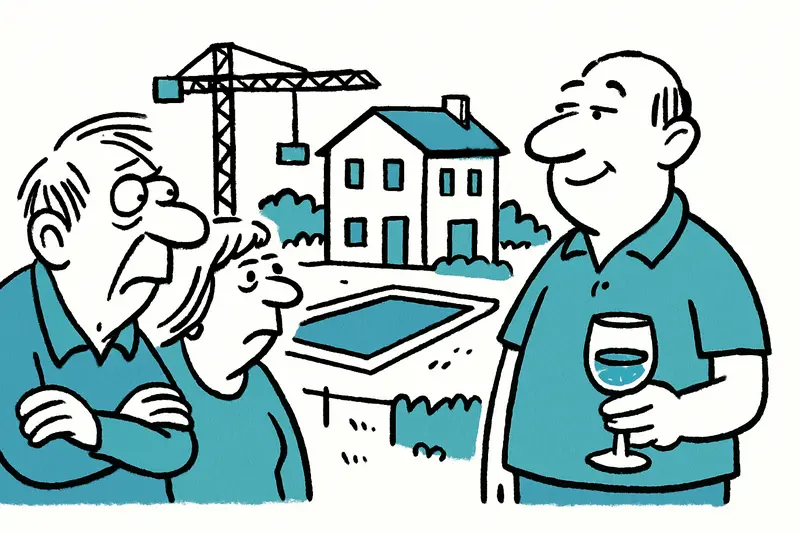Between Santa Ponsa and Andratx, 15 villas with private pools and up to 415 m² of living space are being built. Residents welcome the comfort — critics fear greater densification.
New Villas, Old Debates: Paguera Keeps Growing
Those who have driven along the coastal road between Santa Ponsa and Paguera in recent weeks may have already seen the cranes. Where oleander and pines used to reveal views of the sea, a complex of 15 detached villas is now rising. Each of them will have a private pool; the houses have three to four bedrooms and reach up to 415 square meters of living space — yes, 415 m², you read that right.
"Like a small village" — this is how the project is planned
The construction sign describes the ensemble as a kind of small village: winding footpaths, communal green spaces, a central meeting area for residents. Imagine for a moment: evening strolls on illuminated paths, children riding bikes on a small square, neighbors chatting over a glass of wine. Sounds nice, and honestly — for some here exactly what they want.
Comfort meets criticism
But not everyone sees the project as rosy. In a sidewalk cafe in Paguera, next to the church, I heard voices from people who have lived here for decades. They speak of a "golden mile" that is expanding further — a term that has come up often in recent years when it comes to exclusive new builds in Calvià or Andratx. Critics fear that the new development will further strain the local infrastructure: more cars, tighter parking, higher water consumption in hot summers.
An older man who fetches his newspaper from the bakery every morning said dryly: "It used to be quiet here. Now villa after villa is popping up." Not unfriendly, more resigned. And that is the kind of comment to take seriously in a small community.
Urban planning, environmental impacts and promises
According to project documents, measures for landscape maintenance are planned: native plants, permeable paving, and a rainwater management system. Whether that will be enough remains to be seen in practice — especially in dry summers when every pool must be filled and the soils are thirsty. The municipality notes that building permits must meet the applicable regulations. Still, the concern remains that the density of high-end holiday homes and private properties could alter the community fabric.
What the neighborhood expects
For some residents the project means new jobs, for others rising rents and a changed daily life. At the market stall, the seller said she is curious whether new residents will prefer local shops or order everything online. Typically Mallorcan: hope, skepticism, and a bit of pragmatism.
Whether the 15 villas will permanently change the face of Paguera will ultimately depend on implementation — traffic management, water policy, and how much the new residents want to become part of the community. One thing is certain: anyone walking along or driving along the coastal road will not miss the construction site. And the conversations about it will continue.
Similar News

Mallorca's service providers brace for a lean winter as businesses plan earlier closures
After a weaker summer, many restaurants, bars and shops on Mallorca expect lower off-season revenues. Higher levies and ...

Playa de Palma's Party Strip: Tourists Celebrate – Many Locals Struggle for Money
El Arenal is full of sun umbrellas and sangria, yet the district ranks among Palma's poorest areas. A look behind Playa ...

Palma's Metro to Son Espases Hospital Extended
Balearic Islands president Marga Prohens has announced that the Palma metro line will be extended to Son Espases Hospita...

Imserso sale starts: Senior trips to the Balearic Islands now bookable
From 9:00 AM retirees can book the Imserso trips to the Balearic Islands. Few places, new discounts — and pets allowed f...

When One Job Isn't Enough: Why Many in Mallorca Need Two or More Jobs
On Mallorca, many people take on multiple jobs to cope with rising rents and living costs. A look at reasons and consequ...
